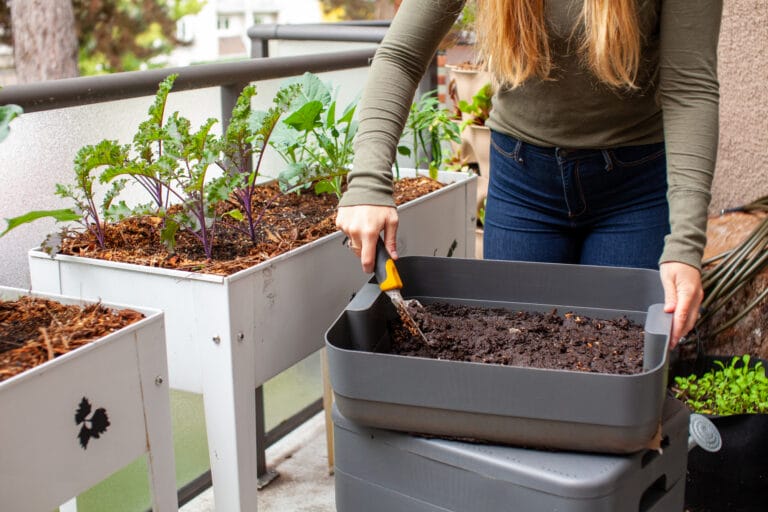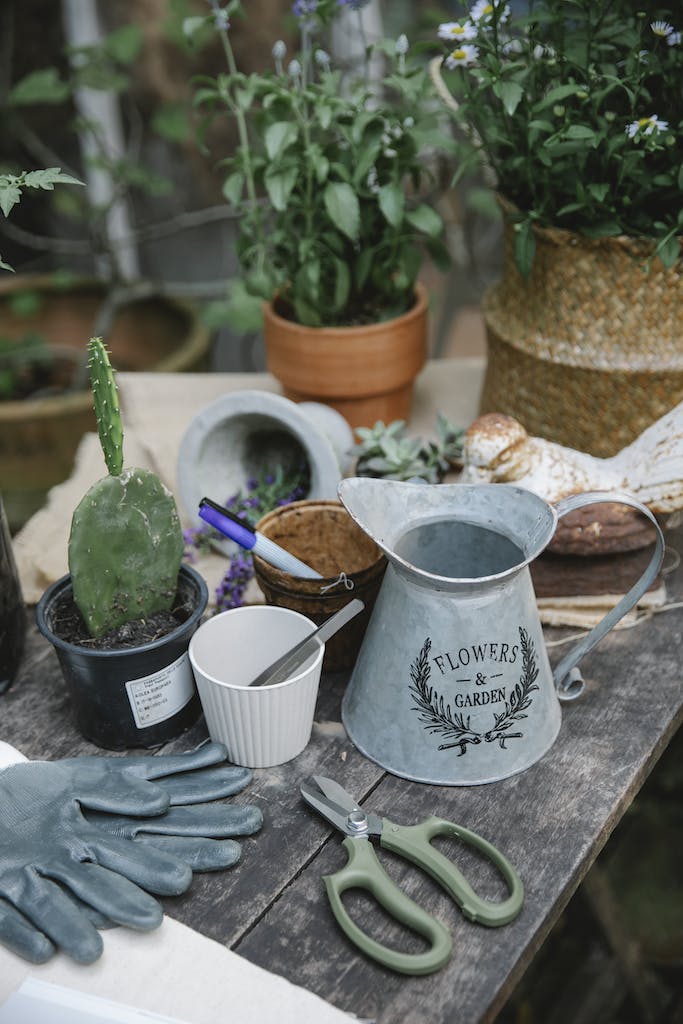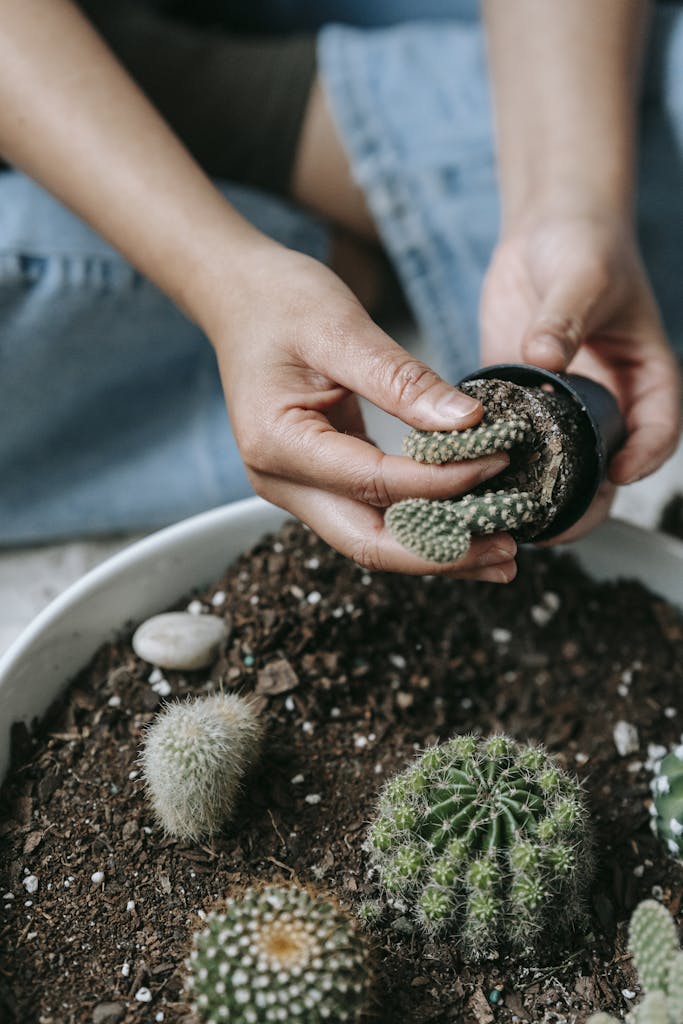I have found a way to farm land without requiring heavy machinery. By using basic tools and dedicated labor, I have managed to prepare my garden for cultivation.
I’ll share how to plow a garden without a tractor, manage weeds effectively, and enhance soil quality for a bountiful harvest.
It’s not as intimidating as it sounds, I promise! So, let’s roll up our sleeves and get our hands dirty together.
Key Takeaways
- Using high-quality garden tools such as a tiller or plower, shovel, claw, and hoe can make plowing a garden without a tractor easier and more efficient.
- These tools offer durability, saving time in the long run, and are typically easier to use.
- Although there may be a higher upfront cost for these tools, the overall value is greater due to their longevity.
- Before plowing, it is important to properly prepare the area by defining and measuring the space, clearing rocks and debris, and conducting soil testing for optimal results.
Essential Tools for Plowing a Garden Without a Tractor
Let’s discuss the tools that’ll make plowing your garden easier without a tractor.
Firstly, a high-quality tiller can be a game-changer.
But don’t forget the versatility of a sturdy shovel.
Also, consider the benefits of a garden claw and hoe.
Investing in a High-Quality Garden Tiller
I’ve found that one of the most important tools to have when plowing it without a tractor is a high-quality plower. Investing in it can significantly ease the process and make it more efficient. A plower attachment can also be a valuable addition, making the job even easier.
Here’s a brief comparison of the aspects to consider:
| Aspect | Low-Quality Tiller | High-Quality Tiller |
| Durability | May break easily | Lasts longer |
| Efficiency | Takes more time | Saves time |
| Ease of Use | Use Can be difficult | Typically easier |
| Cost | Initially cheaper | More upfront, less long-term |
| Overall Value | Less | More |
The Versatility of a Sturdy Shovel
Surprisingly, a sturdy shovel isn’t only a basic tool but also an incredibly versatile one when it comes to plowing without a tractor in a garden. Going old-school, it’s crucial in preparing, and it’s the key to a successful garden.
Here’s how it can be your best ally:
- Loosening the soil: This is the first step in preparing. With its sharp edge, it can easily dig into the soil, breaking up hard clumps and aerating it for better plant growth.
- Digging: After the soil is loosened, it helps in digging holes for planting seeds or transplanting seedlings.
Benefits of a Garden Claw and Hoe
In gardening, I’ve found that the garden claw and hoe, with their unique features, offer exceptional benefits, particularly in plowing.
The garden claw, with its twisting mechanism, easily breaks up the soil, making it perfect for prepping your land. It’s a simple technique that saves time and energy.
The garden hoe, on the other hand, is perfect for shaping soil and creating furrows for seeds. It’s an effortless way to plow your garden in no time.
I’ve observed that the benefits of them extend beyond just plowing. They also aid in maintaining soil health and improving productivity.
Indeed, these tools are essential for any gardener seeking mastery.
Preparing Your Garden for Plowing
Before we start plowing, there’s some prep work in the garden.
First, we’ll need to define and measure our garden area and clear it of rocks and debris.
We’ll also discuss why testing the soil before we begin tilling is a crucial step.
Defining and Measuring Your Garden Area
I’ll start off by drawing out a map of my garden, taking care to note down the measurements from one end to the other. This is the first crucial step in preparing for plowing. It’s important to have a clear idea of your garden area to effectively plow it without a tractor.
Step 1: Defining the garden area
- Measure the length and width
- Outline small garden spots
Step 2: Measuring your garden
- Use a long measuring tape for accuracy
- Keep notes on your garden map
Removing Rocks and Debris from the Area
After mapping out my garden, I’ve got to clear every bit of rocks and debris, for a clean slate is key to preparing the soil for plowing. With a sturdy rake, I begin removing rocks and debris from the area.
I methodically work across my garden plot, raking and picking up any unwelcome items. The debris and rocks get tossed into a wheelbarrow, which saves me countless trips back and forth. It’s a bit of a workout, but it’ll make the plowing process go more smoothly later.
Importance of Soil Testing Before Tilling
Understanding the makeup of your garden’s soil through a soil test is a step that shouldn’t be overlooked. It’s a critical part of preparing the garden, giving you crucial insights into the soil quality.
The importance of soil testing before tilling lies in two main areas:
- It reveals the nutrient and pH levels of your soil. This information is essential in deciding the type and amount of amendment your garden needs.
- It helps identify potential contaminants, ensuring a safe and healthy environment for your plants.
With this knowledge, you can then add compost or other amendments as needed to improve the soil’s nutrient content and structure. Remember, a garden is only as good as the soil it’s grown in. So, don’t skip this vital step.
Effective Techniques to Till Your Garden Without a Tiller
Let’s move on to some effective techniques for tilling without a plower.
We’ll explore the traditional method of using a shovel, the no-till strategy involving mulch, and an advanced technique called the chop-and-pull method with a hoe.
These methods aren’t only beneficial for your garden and your physical well-being.
Traditional Method: Use a Shovel to Turn and Break the Soil
Before we delve into more modern methods, I will show you how to use a shovel to turn and break the soil, a traditional and effective way to till without a tractor. Plowing by hand may seem daunting, but with the right technique, you’ll effectively loosen up the soil and prepare it for planting. To begin, position the shovel at a 45-degree angle and use your body weight to drive it into the soil. Pull it back towards you, lifting and flipping over the soil as you go. Repeat this motion in a row, breaking up the soil as you go. Once you have finished tilling, you can consider incorporating natural rock garden ideas to create a visually appealing and low-maintenance landscape.
- Start by digging a trench: Use it to dig a trench along one edge of your garden. This helps you break up compacted soil and create a starting point for your plowing.
- Turn and break the soil: Plunge it into the trench, turn it over, and break up the clods. Repeat this process, working your way across the garden.
Master this technique, and you’ll find it a rewarding and effective method.
No-Till Method: Add a Blanket of Mulch to Enrich the Soil
Moving on to the no-till method, I’m covering my garden with a thick layer of mulch. This technique enriches the soil without the need for any heavy machinery.
A blanket of mulch not only protects the soil from erosion but also gradually decomposes, adding vital nutrients back into the earth. It’s an organic way to enrich the soil, aiding in better plant growth and productivity.
This method eliminates the need to plow without a tractor, making it a handy technique for home gardeners. You see, the layer of mulch acts as a slow-release fertilizer, gradually improving the soil’s fertility over time.
This no-till method isn’t only time-saving and promotes a more sustainable approach to gardening.
Advanced Method: The Chop and Pull Technique with a Hoe
I’ve discovered another efficient method, the chop and pull technique, and it’s proven to be a powerful tool in tilling without a tractor. This technique is particularly effective at loosening and aerating the garden soil, essential for healthy plant growth.
The process is straightforward:
- Begin with a sharp hoe and a well-defined area of your garden.
- The first step is the ‘chop‘. Swing it into the garden soil at an angle, cutting into the earth.
- The second step is the ‘pull‘. Drag it back towards you, pulling the soil up and apart.
With patience and practice, you’ll find this method a reliable way to plow without heavy machinery.
Enhancing Soil Quality for a Productive Vegetable Garden
Let’s turn our attention to the critical aspect of enhancing the quality of soil in our garden.
I’ll introduce you to the beneficial role of earthworms in maintaining soil health and the importance of organic compost for soil nourishment.
We’ll also touch on how crop rotation can significantly help in preserving the quality of our soil.
Understanding the Role of Earthworms in Soil Health
I’m about to delve into the vital role that earthworms play in enhancing soil health for a productive vegetable garden.
They are crucial to soil health as they contribute to soil aeration and the decomposition of organic matter.
Soil aeration: They move through the soil, creating channels that improve soil aeration. This enhances root growth and plant vigor.
Decomposition of organic matter: They feed on organic matter, breaking it into simpler compounds. This process enriches the soil with nutrients, which promotes plant health and productivity.
Understanding the role they play in maintaining soil health is critical for anyone keen on mastering the art of gardening.
Importance of Organic Compost in Soil Nourishment
In line with earthworms’ contributions, I can’t underestimate the importance of organic compost for enhancing the quality of soil in a garden. This vital component provides essential nutrients and improves soil structure, aiding in maintaining a healthy balance of soil microorganisms.
When preparing the soil, layering compost is an effective strategy. This layer of compost enriches the soil, releasing key nutrients that are instrumental in plant growth and health.
The importance of organic compost in soil nourishment can’t be overemphasized, as it catalyzes a successful garden. By continually adding compost to your garden, you create an environment where plants can thrive, leading to a productive and bountiful garden.
Impact of Crop Rotation on Maintaining Soil Quality
Beyond the use of organic compost, I’ve discovered that implementing crop rotation improves the quality of soil for a thriving vegetable garden. As we continue our journey to plow without a tractor, let’s discuss the impact of crop rotation.
The benefits of crop rotation are twofold:
- Maintaining soil quality: This method ensures the soil isn’t depleted of certain nutrients. Different crops use different nutrients, and rotating them helps balance soil health. For example, legumes can fix nitrogen in the soil, which leafy vegetables like spinach will benefit from in the next cycle.
- Soil without pests and diseases: Crop rotation breaks the life cycle of pests and diseases, reducing their impact. For instance, rotating crops that are susceptible to similar diseases or pests can prevent the buildup of these problems.
Embrace crop rotation for a productive vegetable garden.
Can Manual Tilling be Effective for Clay Soil in the Garden?
When dealing with clay soil in your garden, manual tilling can indeed be effective. However, it can be a laborious task. To improve results, it is recommended to consider alternative methods such as liquid aeration for clay soil. This technique helps to break up compacted soil, allowing for better water penetration and root growth. Ultimately, liquid aeration can enhance the overall health and productivity of your garden.
Managing Weeds in Your Garden Without a Tiller
Now, let’s tackle another challenge – managing weeds without a tractor.
I’ll share how hands-on grass-pulling can be an effective strategy.
We’ll also explore how using mulch as a deterrent and other natural methods can help keep your garden healthy and weed-free.
Importance of Hands-on Weed Pulling
I’ve found that one of the most effective strategies for managing grass is through hands-on grass pulling. This method gives me control over the health of my garden, although it can be a bit of a workout.
A few things to remember when going the hands-on route:
- Garden Gloves: These are essential to protect my hands from thorns and prickles. They also provide a better grip when pulling out stubborn grass.
- Small Space Management: With a small garden, it’s easier to get up close and personal with each grass.
- Loosen the Soil: Before I start grass pulling, I loosen the soil around the roots. This strategy makes it easier to pull out it entirely, ensuring that they don’t grow back.
In essence, hands-on grass pulling is a practical and rewarding way to manage your garden. It may be labor-intensive, but the results are worth it.
Utilizing Mulch as a Weed Deterrent
Let’s delve into how I effectively utilize mulch as a grass deterrent in my garden, eliminating the need for a tiller. Mulch, a protective layer of organic material, acts as a barrier for grass growth in your vegetable garden and garden beds. Not only does it prevent grass germination, but it also enriches the soil as it decays, creating a healthy, nutrient-rich environment for your plants.
Here’s a simple table illustrating the benefits of using mulch:
| Advantage | Mulch Type | Result |
| Weed Deterrent | Organic | Reduced weed growth |
| Soil Enrichment | Organic | Improved soil fertility |
| Moisture Retention | Organic/Inorganic | Consistent soil moisture |
| Temperature Control | Organic/Inorganic | Protected soil from extreme temperatures |
Natural Weed Control Methods for a Healthier Garden
I’m going to share a few effective, natural grass control methods, and you’ll see that managing grasses in your garden doesn’t require a tiller.
Manual removal is a time-tested method. It’s simple; all you need are your trusty gardening gloves and a little patience.
Hand Pulling: This old-school method works best for small gardens. You need to:
- Identify the grasses
- Pull them out by the roots, ensuring they don’t grow back
Mulching: It’s another effective method, ideal for larger plots. The steps involve:
- Covering the soil with a thick layer of organic material
- Ensuring the plot has access to water
You can learn more about these methods from gardening books. They’ll help you maintain a healthier garden using natural grass control methods.
Discover the freedom and satisfaction of tilling your garden by hand, and when you’re ready to upgrade your tools, delve into our roundup of the Best Home Garden Tillers of 2023 to find your perfect match for effortless soil preparation!
Frequently Asked Questions
What Are Some Alternative Methods for Plowing a Garden if I Do Not Have Access to Any Tools?
If you’re without tools, consider using your hands to loosen soil. It’s labor-intensive, but it works. Also, consider creating a no-dig garden, where you layer organic materials to create rich, plow-free soil.
How Can I Maintain the Health of My Garden Without the Use of Chemicals?
I maintain my garden’s health without chemicals by using organic compost for nutrients, encouraging beneficial insects, and rotating crops to prevent disease. It’s all about creating a balanced, natural ecosystem in your garden.
What Are Some Effective Ways to Protect My Garden From Pests Without a Tiller?
To protect your garden from pests without a tiller, I’d recommend using natural deterrents. Planting pest-repelling plants, using diatomaceous earth, and encouraging beneficial predators can all be effective, eco-friendly strategies.
How Can I Ensure Proper Drainage in My Garden Without the Use of Heavy Machinery?
To ensure proper drainage without heavy machinery, I’d create a slight slope in my garden beds. I’d also incorporate organic matter like compost that’ll enhance soil structure, promoting better water movement and drainage.
How Can I Prepare My Garden for Winter Without a Tractor?
I’m preparing my garden for winter without a tractor by manually removing dead plants, applying compost, and mulching. I’m also protecting my perennials with straw or leaves to shield them from the cold.
Conclusion
So, there you have it! With the right tools, some elbow grease, and patience, you can plow your garden without a tractor.
Remember, it’s all about preparing the ground, using effective tilling techniques, improving soil quality, and managing weeds.
It might be a bit of a workout, but your lush, productive garden will be well worth the effort.
Happy gardening!







